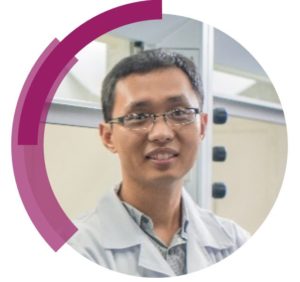In 2017, Zewei Quan published his first independent research article ‘Mild synthesis of monodisperse tin nanocrystals and tin chalcogenide hollow nanostructures‘. We wanted to find out why Zewei chose to publish this work with ChemComm and how his research has progressed in 2020. Read more in the interview below.
What are the main areas of research in your lab and how has your research progressed since publishing your first article?
My research is mainly based on the design and synthesis of novel inorganic materials to understand their structures and promote their applications. Two classes of inorganic compounds, i.e., metal and metal halide in the form of nanocrystal or single crystal, are being actively explored in my group. We are keen to understand the underlying structure-property relationship of these intriguing materials at both atomic and mesoscale levels.
Since my first article in ChemComm, after I became a faculty, we have made a series of progresses in two main aspects. First, high pressure is adopted to investigate the structural responses at atomic level and the corresponding property variations under compression. As for metal halides with soft lattices, intriguing pressure-induced optical behaviors have been demonstrated, including band-gap narrowing in three-dimensional (3D) double perovskite of Cs2AgBiBr6, remarkable emission enhancement in one-dimensional (1D) cuprous halide complex of CsCu2I3, and emission color modulations in zero-dimensional (0D) hybrid metal halide, (bmpy)9[ZnBr4]2[Pb3Br11]. As for noble metal nanomaterials (Au and Pd), a series of pressure-induced phase transformations have been observed, to uncover their intrinsic phase stability and atomic movement path between different phases. Second, in addition to atomic structure, we are also interested in producing novel meosclae superstructures based on anisotropic nanoparticles and exploring their collective optical properties. Notably, well-defined nanodumbbells have been self-assembled into an orientationally ordered 2D degenerate crystal with a 6-fold symmetry, in which these NDs possess no translational order but three allowed orientations with a rotational symmetry of 120 degrees.
What do you hope your lab can achieve in the coming year?
In the coming year, we look forward to exploring the structure-dependent optical properties of 0D metal halides. The self-trapped exciton (STE) emission of these hybrid metal halides has several intriguing features, however, is still rarely investigated in past decades. We plan to utilize the high pressure method to understand the key factors in determining their STE emission characteristics including energy, intensity and quantum yield, and then design and prepare the target systems with appropriate structural parameters and desired optical properties.
Describe your journey to becoming an independent researcher.
After I received my B.Sc. degree from Wuhan University in 2004, I went to Changchun Institute of Applied Chemistry, Chinese Academy of Science to start my graduate study under the supervision of Prof. Jun Lin, and obtained my Ph.D. degree in 2009. My interest was mainly focused on the synthesis and characterization of high-quality luminescent nanocrystals. After that, I begun to work at SUNY Binghamton with Prof. Jiye (James) Fang, and then worked at Los Alamos National Laboratory with Dr. Hongwu Xu and Dr. James Boncella as an Oppenheimer Fellow. During this postdoctoral period, I enjoyed investigating the self-assembly behaviors of colloidal nanoparticles and the high-pressure structural variations of several typical nanocrystals. I have been a Professor of Chemistry at Southern University of Science and Technology (SUSTech) in Shenzhen, China since 2015.
What is the best piece of advice you have ever been given?
The best piece of advice for my career is “Be a super-postdoc to start your independent research”. When I had my own research group, in addition to teaching courses and writing proposals, I devoted most of my effort to constructing the lab, designing and performing the experiments, analyzing the data and writing the papers, like a super postdoc. This advice is very helpful to train the junior members with capabilities to perform their own research projects.
Why did you choose to publish your first article in ChemComm?
I chose to publish my first independent work in ChemComm, to present a mild synthesis method of monodisperse nanocrystals. ChemComm is a classical journal with a decent reputation, and the scope covers most fields in chemistry. I believe my work published in ChemComm would have a broad readership. Right now, I have two other papers published in ChemComm, and hopefully will have more soon.












